#Alexander Botticelli
Explore tagged Tumblr posts
Text

1477, Sandro Botticelli, Madonna con il Bambino e angeli cantori
#Alexander Botticelli#Sandro Botticelli#Madonna con il Bambino e angeli cantori#saec. XV#1477#pictura#Gemäldegalerie#Staatliche Museen zu Berlin#Berolini#Virgo#Maria#Angeli#Iesus
9 notes
·
View notes
Text
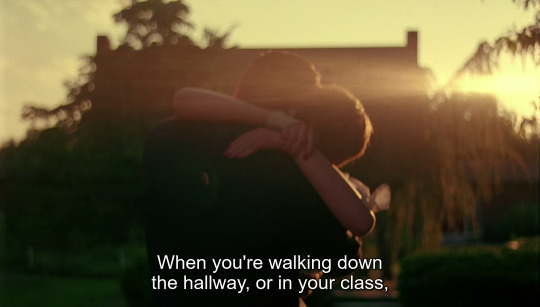
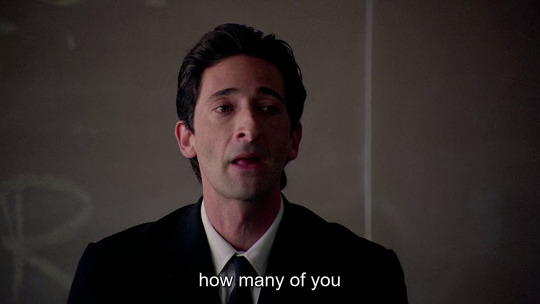

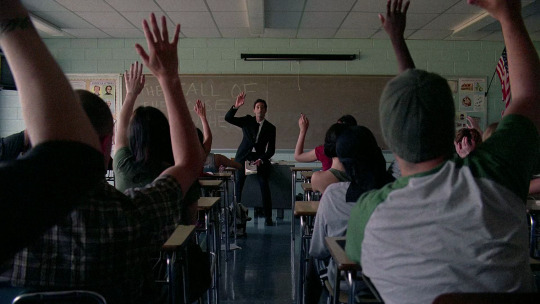

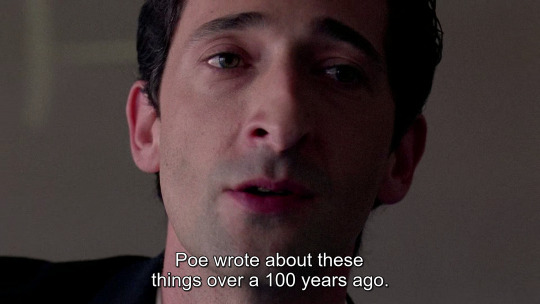

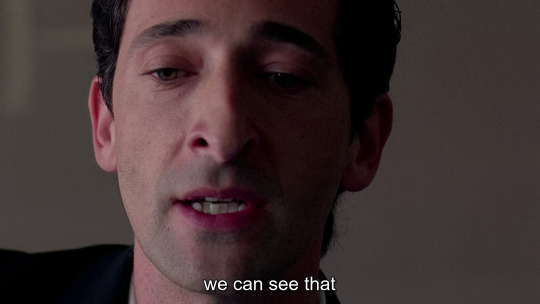


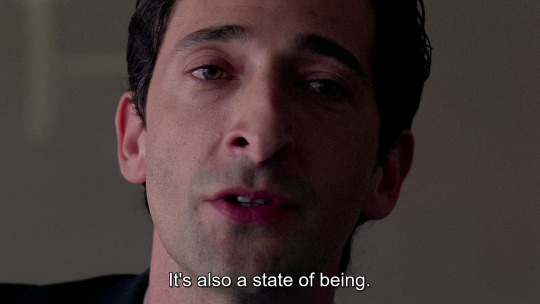
Detachment (Tony Kaye, 2011).
#detachment#detachment (2011)#tony kaye#adrien brody#Michelle Botticelli#Barry Alexander Brown#Peter Goddard#Geoffrey Richman#Jade Healy#Wendy Schecter
259 notes
·
View notes
Text
He Cong photographed by Leslie Zhang for Marie Claire China, inspired by famous works of art.
Sandro Botticelli, The Birth of Venus.
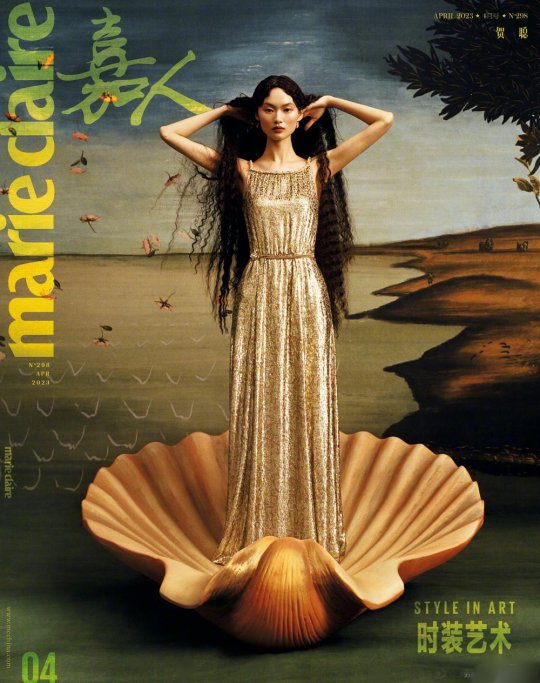

John Singer Sargent, Madame X

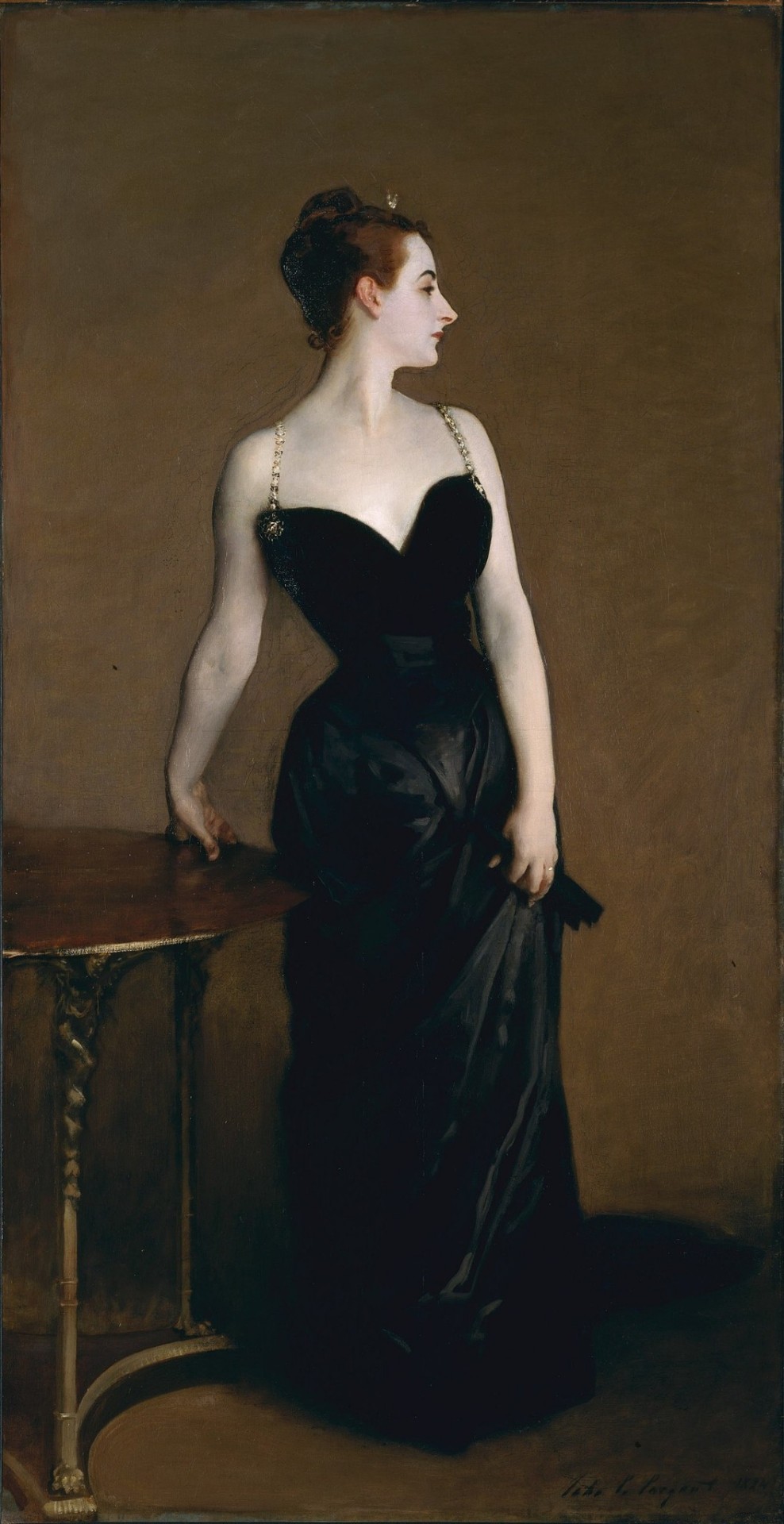
Henri Matisse, Le chapeau de Paille.
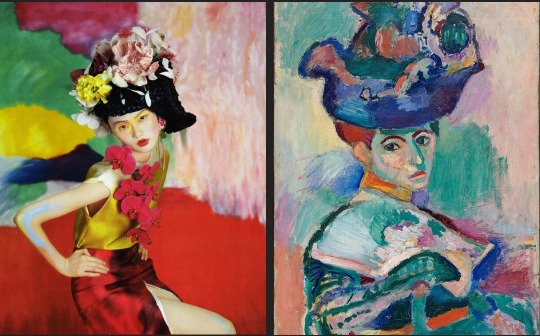
Jean Auguste Dominique Ingres La Grande Odalisque

Alexander Roslin, The Lady with the Veil.

Rene Magritte, Man in a Bowler Hat.

John Collier, Lady Godiva.
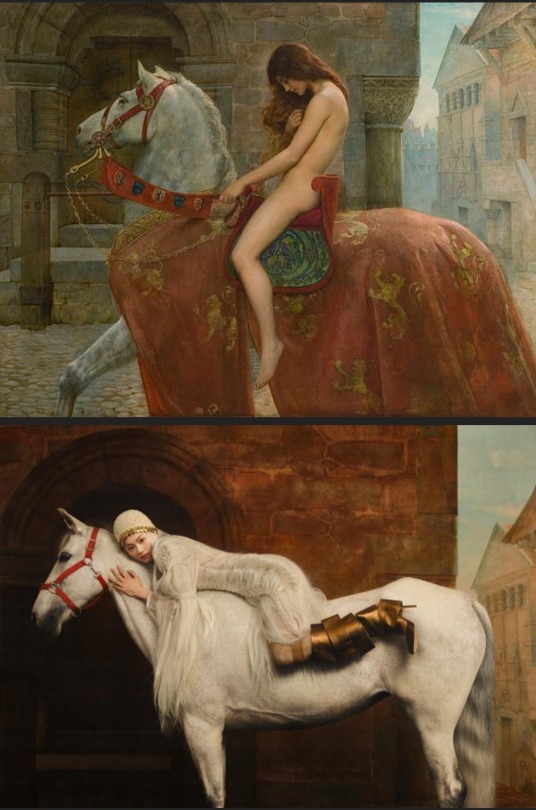
#leslie zhang#art#fashion photography#art photography#sandro botticelli#john singer sargent#henri matisse#jean auguste dominique ingres#marie claire#he cong#John Collier#rene magritte#alexander roslin
8 notes
·
View notes
Photo
First thing that came to kind was Botticelli, not sure why... Anybody else?

Alexander McQueen Fall 2016 RTW
324 notes
·
View notes
Text

Alexander Bassano • Lady Lavery dressed as Flora, in a pose inspired by Botticelli's painting "Primavera", 1911
285 notes
·
View notes
Text
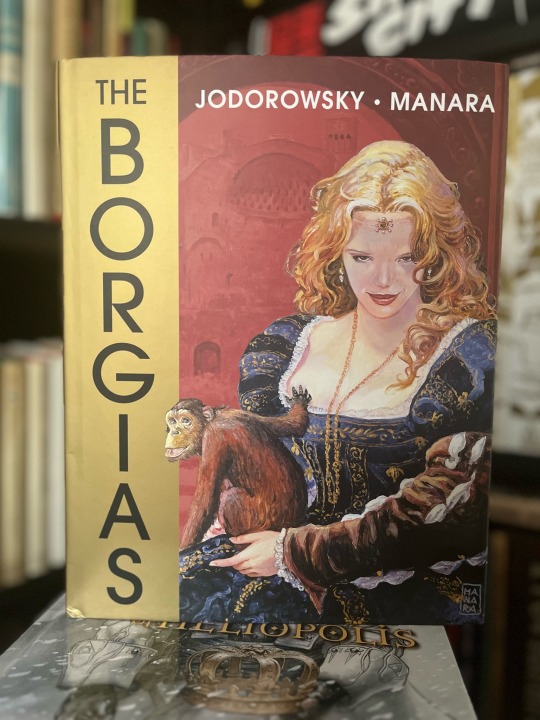
“THE BORGIAS AND THE MAFIA
In 1455, the Holy See was occupied by Alfonso de Borja, a descendant of this eighth knight, under the name Callixtus III. Having gained the trust of King Alfonso Il of Naples, he came to power at the age of seventy-seven, while suffering from stomach cancer. His pain made him suspicious. He believed only in the loyalty of his Spanish family. Through the legacy of inheritance, his fortune fell into the hands of Rodrigo Borgia, who used it to fund his own ascension to the papal throne. Thus was born the first Mafia clan in history.
The Borgias possessed an absolute thirst for power. Europe had, by then, lost all hope in the goodness of God: the plague known as the Black Death had made miserably clear just how precarious human life can be, and with the bitterness of an orphan deprived of its supreme father, the populace consoled itself by indulging in carnal pleasures. It was in this context that Rodrigo Borgia, now Pope Alexander VI, began trafficking in a very powerful drug: papal bulls, which granted the forgiveness of sins . . . Every citizen could murder, steal, gamble, engage in prostitution or incest or unbridled gluttony, and all without fear: because in exchange for a handful of ducats, the Church offered absolution and the assurance that God would welcome the sinner into heaven.
The Borgias' passion for life, for dominance over all mankind, their disdain of any divine retribution, this absolute lack of morality, offset by their staggering appreciation of fine art, utterly captivated me. Knowing that the respectable Church of today once had a Spanish adventurer at its roots, a clever thief who was surrounded by his bought-and-sold lovers and by his children, each embodying a spiritual summit as well as an abyss - Cesare, strength and tyranny; Lucrezia, beauty and lust; Giovanni, intelligence and vanity; Gioffre, purity and stupidity - reminded me of the lotus plant, whose bright flowers spring from filthy swamps . . . And so I yielded to the temptation to write a comics script: in the form of a vast historical fresco on the creation, growth, and death of this provocative family, so similar to some of the people currently governing our planet.
(…)
In place of the Black Death, we have cancer and AIDS, along with pollution of our air, our water, and our planet. Instead of cities at war, we are witness to entire countries fighting. Christianity and Islam remain in conflict even today. The discovery of the Americas has now become interplanetary exploration. We're experiencing the artistic revolution of the Renaissance through personal computers and the Internet. The papal bulls of yore are today's commercial "benedictions" from the United States. Just as the ducat was the key to paradise during the Renaissance years, our only God is the almighty dollar: whether its value goes up or down and the gates of heaven open or close . . . Just as Machiavelli, in his book The Prince, recommended aggressive invasions to achieve Italian unity, in this day and age a powerful nation (that shall remain nameless) ruthlessly attacks any country, claiming to obstruct "Evil" but spurred on, in fact, by its thirst for oil . . . Today, the Borgias have been replaced by oil mafias, pharmaceutical industry multinationals, drug cartels, and greedy bankers.
And yet, the corruption that flourished during the Renaissance could not prevent the emergence of a Leonardo da Vinci, a Raphael, a Botticelli, a Michelangelo, a Dante, a Machiavelli even, as well as so many others who opened up new vistas to human awareness. This is what brings us great hope: the possibility that the decadence of the world today is just the pain of a chrysalis becoming a butterfly, and that from the last vast crisis into which we plummet a new humanity will arise, one that will look upon us with the same tender compassion we feel for the monkeys.
—Alejandro Jodorowsky
August 2011”
#jodorowsky#alejandro jodorowsky#manara#milo manara#borgia#borgias#graphic novel#comic books#dark horse#papacy#pope#Italy#renaissance#machiavelli
111 notes
·
View notes
Text

Venus and Mars by Sandro Botticelli

‘An Allegory’ made by one of his followers
In June 1847 the National gallery won an auction bid for several of Alexander Barkers Italian paintings. Two Botticellis were bought- or so they thought. Venus and Mars was purchased for £1,050 and An Allegory for £1,627 10s as it was thought to be a companion to Venus and Mars. An Allegory has since been stored in the basement of the gallery upon the realisation that it was an imitator of Botticelli. It’s hard to imagine how it’s stiff poses and lifeless faces could have been attributed to Botticelli and even how it was bought for more than the elegant Venus and Mars. - summery of text from ‘If the paintings could talk’ published by the National Gallery, London
#art history#sandro botticelli#venus and mars#national gallery london#art facts#classical art#italian painting#italian art#greek myth art
5 notes
·
View notes
Text

Julia and the Shark
Author: Kiran Millwood hargrave
First published: 2021
Rating: ★★★★★
One of the best middle-grade books I have ever read I think. Kiran Millwood Hargrave is a gorgeous writer and her use of language is simply masterful. She also chooses fascinating topics and it pains me that from time to time all that lacks a certain impact. But Julia does have it. The simplistic illustrations are captivating and perfectly enliven the story.
The Last Princess: The Devoted Life of Queen Victoria's Youngest Daughter
Author: Matthew Dennison
First published: 2007
Rating: ★★★☆☆
If you have a truly deep interest in Queen Victoria, her family, or a life of nobility in the 19th century, this is a book you should read. Princess Beatrice never held any important political posts, never made a grand marriage, never had to make any momentous decisions, and is largely forgotten today. But Mathew Dennison put together a gentle portrait of her existence and through her introduced yet another layer to other, more famous personages in Beatrice´s life. However, if you are after a book that would somehow shock you, or give you tremendous new information or gossip, pass on this one. It is slow and the author does repeat his main points at almost every turn, which sometimes could be tedious. Also, prepare yourself for lots of assumptions that fill up empty places we know nothing about.
The Infinity of Lists
Author: Umberto Eco
First published: 2009
Rating: ★★★☆☆
A gorgeous and richly illustrated list of lists. I was surprised at how many things actually are "lists", some of the points were fascinating, and some went over my head. A difficult book to read to be honest.
Visions of Beauty
Author: Kinuko Y. Craft
First published: 2022
Rating: ★★★★★
I was waiting to show the book also to my mum, who studied art at university and had never heard of Kinuko Y. Craft before. Today we spent over an hour going through the pages together and she said it was possibly the most beautiful thing she has ever seen. As for me, I have been aware of the artist because I came across her illustrations of fantasy book covers (Wildwood Dancing was a particular favourite of mine). When I, completely by chance, found the Visions of Beauty, I was greatly excited. What a stunning compilation of paintings and drawings! What I find particularly remarkable about them is that I can often clearly see the inspiration behind the picture (there is Da Vinci and my favourite Botticelli, there is some Mucha and Raffael, there are medieval altar paintings as well as portraits from the 19th century), but it is never a copy and always takes on the originality of its own. The pictures can be read, not just observed, with numerous tiny details incorporated into the portraits, so even when I think I have seen it all, I find more and more flowers, animals, symbols, and even human figures where before seemed to be just foliage. I cannot even choose my favourite painting, because there are way too many.
The Idiot
Author: Fyodor Dostoyevsky
First published: 1869
Rating: ★★★★☆
I don´t think there is much need to write yet another review of this book when so much has been said by more eloquent readers than I am. To me personally, it was particularly interesting after reading a biography of Dostoyevsky and I could easily see the roots and traces of many incidents and thoughts presented in this novel. But ultimately I did find the story a bit drowned by too much that was said in ways that were simply too dragged out. And yet I still think about that ending.
Imitation of Mary
Author: Alexander De Rouville
First published: 1977
Rating: ★★★★☆
Very comforting for anyone with Catholic leanings and devotion to Mary.
Demon in the Wood
Author: Leigh Bardugo
First published: 2022
Rating: ★★★★☆
I just really enjoy the stories Leigh Bardugo tells... this is a very nicely created graphic novel, but to be completely honest, I would have preferred it to be simply a written story.
Mislaid in Parts Half-Known
Author: Seanan McGuire
First published: 2023
Rating: ★★☆☆☆
I keep reading these because they are short and well-intentioned... but half of these books do not really have a story. This one is one of the storyless ones, not to mention I felt like it was by far the most filled with long speeches about points already made, conclusions already reached, dilemmas already introduced. Also, all the main characters seem to be the same.
Cleopatra: A Life
Author: Stacy Schiff
First published: 2011
Rating: ★★★★☆
Everybody knows the story of Cleopatra and yet, as this book lets you know in a very readable and convincing style, we actually know very little for certain. Stacy Shiff does for the Egyptian Queen what Robert K. Massie did for Catherine the Great: painting a vivid portrait of a woman in a position of power in an age when she was an anomaly. Her achievements have been tainted, her motivations misconstrued, her personality dragged through the mud. We arguably have a better grasp of the Russian empress than Cleopatra, but I imagine they both would have a lot to talk about.
Ruthless Vows
Author: Rebecca Ross
First published: 2023
Rating: ★★★☆☆
Much like I enjoyed the first installment, I enjoyed this second one as well. Everything is still in it, from a swoon-worthy romance to some truly excellent use of language and very evocative scenes of being trapped in a war. Nice.
The Poisonwood Bible
Author: Barbara Kingsolver
First published: 1998
Rating: ★★★★★
This is a story of a family, where every voice is their own and their feelings are communicated brilliantly to the reader. It is also a clear-eyed look at colonialism in the 20th century, human arrogance and prejudice as well as familial loyalty and love. It is a heartbreaking read, perhaps a bit too lengthy once the pinnacle of the story passes, but I found it both engaging and in some ways also enlightening.
The Testaments
Author: Margaret Atwood
First published: 2019
Rating: ★★★★☆
While it lacks the shock factor of its predecessor, The Testaments offers a satisfying conclusion in its stead. Was it necessary? Not really. But in the modern world the dystopia once imagined by Margaret Atwood needs to be remembered. Our reality seems to be striving towards it, sometimes with terrifying speed.
The Book of Magic
Author: Alice Hoffman
First published: 2021
Rating: ★★★★☆
More than magic itself, this whole series is about being loyal to your family and the unconditional love that binds that family. The Book of Magic reunites the reader with all of the characters that we already love and now we see the end of their journey. And truly I mean all of them. Alice Hoffman yet again writes in a way that makes you smell the lilacs and hear the bees in the trees. Lovely.
6 notes
·
View notes
Text
Birthdays 5.17
Beer Birthdays
Bert Grant (1928)
JJ Jay (1959)
Five Favorite Birthdays
Sandro Botticelli; Italian artist (1444)
Craig Ferguson; comedian, television talk show host (1962)
Bob Saget; comedian, actor (1956)
Erik Satie; composer (1866)
Dave Sim; comic book artist (1956)
Famous Birthdays
Sasha Alexander; actor (1973)
Stewart Alsop; journalist (1914)
James "Cool Papa" Bell; St. Louis Stars CF (1903)
Bill Bruford; rock drummer (1949)
Andrea Corr; pop singer (1974)
Horace Elgin Dodge; auto maker (1868)
Enya; pop singer (1961)
Dennis Hopper; actor (1936)
Edward Jenner; invented vaccinations (1749)
Alan Kay; computer scientist (1940)
Sugar Ray Leonard; boxer (1956)
Taj Mahal; singer, songwriter (1942)
Jackie McLean; jazz saxophonist (1932)
Bob Merrill; songwriter (1921)
Jim Nantz; television sportscaster (1959)
Brigitte Nielsen; actor (1963)
Birgit Nilsson; opera soprano (1918)
Maureen O'Sullivan; actor (1911)
Bill Paxton; actor (1955)
John Penn; signer of the Declaration of Independence (1741)
Dennis Potter; writer (1935)
Trent Reznor; rock singer, musician (1965)
Seth Warner; revolutionary war hero (1743)
0 notes
Text
‘Bastion Of The Super-Rich’: Inside A New York Billionaire’s Private Museum
A collection of art, featuring pieces by Picasso, Lichtenstein and Cézanne, has been kept secret for years but for select members of the public, the door is slowly being opened
— Francesca Carington in New York | Tuesday 11 July 2023

Paul Cézanne: L’Oncle Dominique coiffé d’un turban (ca 1866); Still Life: Lilacs (ca 1886); Vue prise de l’atelier des Lauves (1902-1906); Route tournante (1890-95); Route en sous-bois (1890). Jean Dubuffet: Les Deux Brigands (1944) © 2023 Artists Rights Society (ARS), New York / ADAGP, Paris. Wang Ziwei: Hopeless Miss Revolution (2003) © Wang Ziwei. Roy Lichtenstein: Girl in a Mirror (1964) © Estate of Roy Lichtenstein. Henri Matisse: Le Jeune Marin I (1906) © 2023 Succession H Matisse / ARS, New York. Photograph: Bonnie H Morrison
It was Fleet Week in New York City, and something unusual was taking place on Billionaires’ Row. At 9 West 57th Street, an elegant black sloping skyscraper towering over the Plaza hotel and the half-dozen sailors congregated outside, 20 people were ushered into a small, glass-fronted gallery on the ground floor. A ferocious crimson Basquiat greeted them, along with a monochrome Kline and a serene Henry Moore – works collected by the building’s late owner, the real estate mogul Sheldon Solow.
The exhibition’s curator, Joseph Henry, silenced the excitable group. “You are the absolute first members of the public to come on a public tour,” he said, standing beneath an Alexander Calder mobile.
Under the watchful gaze of three sentinel security guards, Henry led the group on a swift, authoritative tour of the works he had brought together: a quartet of Cézannes, smudged in delicate blue and green; an angular mask carved by the Dan people of Ivory Coast, hanging next to a complementarily geometric Picasso; two Giacometti portraits with cockroach-coloured faces; three Miró dream paintings; a somewhat dingy Van Gogh. The tour ended after 35 minutes precisely, and a distinguished-looking gentleman with a Strand Bookstore bag asked: “So why were you closed for so long?”
“Closed for so long” implies the gallery was once open. It wasn’t. For years, the art could be glimpsed only from outside, beyond the glare of the windows. The collection, amassed by Solow, who died in 2020 aged 92 and worth $4.4bn, is conservatively valued at $500m. And while the majority of works were privately owned by Solow – and now by his son, Stefan Soloviev (who uses the pre-Ellis Island version of the family name) – a dozen or so of them are held by a tax-exempt non-profit called the Soloviev Foundation.
Set up by Solow in 1991 as the Solow Art and Architecture Foundation (and since renamed by his son), the non-profit describes its charitable activities in its tax filings: “The foundation maintains and displays artwork for exhibition to the public at the 9 West 57th Street, New York building.” While the gift of artworks like Matisse’s Acrobats (which is worth $30m) and Van Gogh’s Coal Barges ($50m) to the foundation entitled Solow to certain tax write-offs, they were not readily accessible to the public.

The Solow building in Manhattan. Photograph: lm_photography/Alamo
This completely legal set-up caught the eye of Ethan Arnheim, a Washington-based international development consultant, who created a parody website drawing attention to the foundation’s tax status and inaccessibility in 2017. He was outraged, but also, he said, hoped to “alert people to the fact that … you can do this questionable practice under current code”. A few of the artworks were technically on “public” display in the office building’s lobby (hardly an art-world destination) and some were lent to museums, such as the Botticelli sold in 2021 for $92m (which spent many years at the Met) or a Miró triptych, which went to the Tate Modern in 2011. Although, as Arnheim pointed out, lending to museums is a common practice among collectors, since it increases the value of the works.
There are plenty of examples of art foundations that work well as private museums, such as Glenstone in Washington DC, the Broad in LA and the Rubell museums in Miami and DC. And there are plenty of generous patrons of the arts, like the Lauders or the Rockefellers, in New York City, said Robert Storr, former senior curator of painting and sculpture at MoMA and one-time holder of a professorship at NYU endowed by Sheldon Solow. (The foundation has made a number of large donations over the years, including gifts to NYU, $3m to the University of Rhode Island and, recently, $400,000 to another family-run non-profit, the Soloviev American Russian Cultural Foundation.)
But according to Storr, “the idea of a private museum is kind of an oxymoron, because a museum is a public space.” A museum does not exist in isolation, but rather in dialogue with its visitors, with its own collection and with the society it serves. Most of all, Storr emphasised, a museum is accessible: “A museum is its collection. If you can’t get to that collection, there is no museum.”
Private museums have come under scrutiny in the past, most notably in 2015, when the Republican senator Orrin Hatch led an inquiry into 11 tax-exempt private museums (the Solow Foundation was not one of them). Hatch concluded in a letter to the IRS: “Despite the good work that is being done by many private museums, I remain concerned that this area of our tax code is ripe for exploitation.” A Republican tax bill proposed a rule compelling private museums to be open a minimum of 1,000 hours a year, but it was not enacted.
The curdling of art into an asset class began some time ago, but such behaviour by the wealthy only crystallises the social stratification of the art world: “A lot of art is seen as esoteric and highbrow and inaccessible, and this behaviour only serves to reinforce that view,” said Arnheim. “Less people are going to want to go to museums when they can’t even get into museums and it’s perceived as just the bastion of the super-rich.”
Could some kind of democratisation be under way at 9 West 57th Street with the changing of the guard? Michael Hershman, CEO of the Soloviev Group, wrote in an email: “The reason for opening the collection to the public is social responsibility. It is a wonderful collection, and we want to share it with the public.” The opening was not, he added, “in any way driven by past criticism”, and the decision was taken by Stefan Soloviev.
Soloviev is no typical billionaire. The tattooed 47-year-old with a boyish undercut has 22 children. His fractious relationship with his father led him to move out west, where he built an agricultural empire that now places him among the top 30 largest landowners in the US.
Soloviev was not present at the opening, though Hershman was, smiling beatifically as he spoke to curious visitors. He was animated, but vague, as he spoke of the gallery’s future. “We’re in the process of sticking our toe in the water, if you like. Before we decide what to do next.” The gallery is undertaking something of a soft opening to the public, beginning with four tours a month, and the website gestures towards nebulous plans for an “expansion” in due course. (The Soloviev Group is one of several developers bidding for one of New York City’s three soon-to-be-granted casino licences. Its proposal, called “Freedom Plaza”, would develop a 6.7-acre plot of land by the United Nations, and includes a hotel, four acres of green space and a museum.)
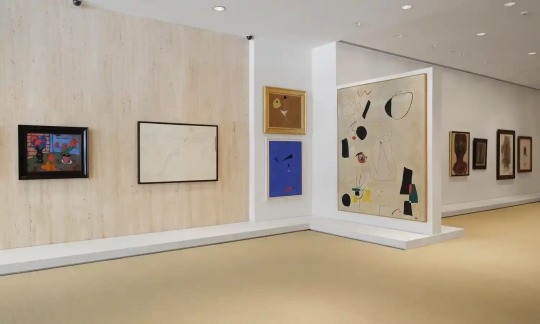
Alexej von Jawlensky: Still-Life with Flowers and Oranges (c 1909) © 2023 ARS, New York. Cy Twombly: Untitled (1961) © Cy Twombly Foundation. Joan Miró: Composition (1926) © Successió Miró / ARS, New York / ADAGP, Paris 2023; Peinture (1927) © Successió Miró / ARS, New York / ADAGP, Paris 2023; Paysage animé (1935) © Successió Miró / ARS, New York / ADAGP, Paris 2023. Jean Dubuffet: Henri Calet Costume Rouge 1947 © 2023 ARS, New York / ADAGP, Paris; Le Jongleur 1944 © 2023 ARS, New York / ADAGP, Paris. Alberto Giacometti: Caroline in a Red Dress (1965) © Succession Alberto Giacometti / ARS, NY 2023; Portrait of Yanaihara (1960-62), © Succession Alberto Giacometti / ARS, NY 2023. Photograph: Bonnie H Morrison
For now, however, the gallery is open to whichever 20 lucky punters manage to score a spot on a tour. Vagueness aside, Arnheim is optimistic about the opening. “I don’t understand what their strategy is. But in the end, they’re doing the right thing, and that’s what’s important.”
For Storr, however, a few days a month is not good enough. “It’s grudging – you need to make a place where people feel comfortable coming in, and I know that many people feel uncomfortable even going to the galleries, which are free.” Indeed, the intrigue surrounding the collection as the result of its previous exclusivity may serve to further entrench a perception of art by well-loved artists as trophy collectibles for tycoons, rather than magnificent works for the city to revel in. Or, as Storr puts it, “just expensive things that somebody else owns and you get a chance to see”.
The reaction to the gallery’s opening on New York’s gallery circuit has been more ambivalent. Some stuck up their noses at its office-building location; some hadn’t even heard about it. For others, a lack of enthusiasm had more to do with the competition than the quality of the collection itself. As Ray Waterhouse, co-owner of the Upper East Side gallery Waterhouse & Dodd, pointed out, the city’s museums are stuffed with fabulous paintings. “So it’s somewhat irrelevant to the New York art landscape,” he said. “I’m not saying it’s not worthy.”
The art world has moved on from Solow’s mid-century taste. But there’s a value to the (intermittent) opening of a small, manageable collection of crowd-pleasers around the corner from MoMA and its long queues. With dynamic curation and a dramatic increase in the number of hours it’s open, the Soloviev gallery could come to be known for the quality of the art it houses rather than for its inaccessibility. As for the social barriers carefully built up by the collection habits of the international super-rich – that damage might take longer to unpick.
Not least in New York City, the art world’s financial capital. The tour ended with a glass of champagne in the building’s swanky subterranean restaurant, Cucina 8½. Afterward, I made my way past Bergdorf Goodman to the 59th Street subway station, where a man sat on the steps with a box of pastels and a cardboard sign which read: “Artist in need.”
#Art | New York | Art and Design | Museums | Culture#Article | Features | Francesca Carington#The Guardian USA 🇺🇸
0 notes
Text
I grandi marchi: Elsa Schiaparelli

La stilista più eccentrica del primo Novecento… Elsa Luisa Maria Schiaparelli nacque a Roma, a Palazzo Corsini, il 10 settembre 1890 in una famiglia di intellettuali piemontesi, dove la madre, Giuseppa Maria de Dominicis, era di origini napoletane mentre il padre, Celestino fu il primo bibliotecario dell’Accademia dei Lince, una delle istituzioni scientifiche più antiche d’Europa, suo zio Giovanni fu un famoso astronomo e suo cugino Ernesto era un noto egittologo e senatore. La giovane Elsa studiò filosofia e sognava di diventare una poetessa ma la famiglia la mandò in un convento Svizzero, poi a Londra, durante una conferenza della Società Teosofica, conobbe Wilhel de Wendt, un conte appassionato di filosofia. Elsa sposò il conte nel 1914 e si trasferirono a New York dove nacque Maria Luisa Yvonne Radha detta “Gogo” nel 1920 e dove la giovane conobbe personalità come Marcel Duchamp e Man Ray. Il matrimonio finì con il divorzio nel 1922, a causa dei tradimenti del marito, ed Elsa rimase da sola con Gogo. Tornata in Europa e stabilitasi a Parigi la contessa conobbe il noto stilista Paul Poiret durante una passeggiata, e in poco tempo divenne una sua allieva. I primi lavori di Elsa come disegnatrice di modelli non ebbero molto successo, dato che le aziende con le quali lavorava non volevano avere a che fare con una debuttante, ma decise che non si sarebbe arresa e nel 1927 aprì il suo atelier al 4 di Rue de la Paix a Parigi. Le sue creazioni furono incredibili, come il maglione completamente nero e con un grande fiocco bianco trompe-l’oeil, oltre ai temi dei suoi capi come i cuori trafitti, i tatuaggi tipici dei marinai, i pullover ai raggi X, che ripercorrevano le ossa del corpo; il cappello matto in maglia, che poteva assumere qualsiasi tipo di forma e i suoi primi abiti da sera. La popolarità di Elsa crebbe a dismisura tanto che il 13 agosto del 1934 il Time la mise in copertina, ed era la prima stilista donna, descrivendola come “più folle e originale della maggior parte delle sue contemporanee”. L’arte ebbe da subito un ruolo fondamentale nell’atto creativo per la Schiaparelli e infatti, dal 1935 iniziò le collaborazioni con Christian Bérard, Léonor Fini, Jean Cocteau, Salvador Dalí, Alberto Giacometti, Mere Oppenheim e Pablo Picasso. Le sue presentazioni non erano delle sfilate, ma spettacoli a tutti gli effetti con al centro il tema della maschera e del gioco. Elsa fu anche la prima stilista a ideare collezioni a tema come Papillon del 1937, Cirque del 1938 e Pagana della Fall del 1938, ispirata ai dipinti del Botticelli. La seconda guerra mondiale spinse la Schiaparelli a trasferirsi negli Stati Uniti, dove viveva la figlia Gogo, continuando però a mantenere aperto il suo atelier parigino, ora al numero 21 di Palace Vendôme. Il grande successo di Christian Dior e del suo New Look e la fine della Seconda guerra mondiale segnarono le fine dell’incredibile carriera di Elsa Schiaparelli. Nonostante Hubert de Givenchy avesse iniziato a lavorare nel suo atelier, la fama del brand si affievolì a causa della lontananza di Elsa, che aveva deciso di passare la sua vita tra ala Tunisia e Parigi sempre più lontana dalla moda. Elsa Schiaparelli morì il 13 novembre 1973, a 83 anni, lasciando un’eredità che ha ispirato nomi come Yves Saint Laurent, John Galliano, Alexander McQueen, Miuccia Prada e Rei Kawakubo. Read the full article
0 notes
Text
okay i dont have anything particularly niche or unknown to offer, but my top three favourite pieces ever are in no particular order,
Primavera by Sandro Botticelli (which i have as laptop and phone lockscreens, prints of, even a pair of socks with a detail on)
Lucretia Borgia Reigns in the Vatican in the Absence of Pope Alexander VI by Frank Cadogan Cowper, which i just find stunning.
and La Belle Dame Sans Merci by Frank Bernard Dicksee which is the only one i’ve had the luck to see in person and it is even more phenomenally beautiful like that, the sweet romanticism and pre-raphaelite beauty really shine.
Wish i could offer something a little more unknown but I hope you see in these works just what I do!
ok tumblr and especially tumblr mutuals: what's your favorite piece of art??
28 notes
·
View notes
Photo


Details - Sandro Botticelli, Primavera. Alexander McQueen, spring, 2018.
21K notes
·
View notes
Photo

USA 1984
#USA1984#KRELL SOFTWARE CORP.#EDUCATIONAL#APPLE#IBM#C64#ATARI400/800#TRS80#BBC#CONNECTIONS#BOTTICELLI#PLATO'S CAVE#ALEXANDER THE GREAT
18 notes
·
View notes
Text


Botticelli // Alexander McQueen
#botticelli#sandro botticelli#art detail#la primavera#primavera#the spring#alexander mcqueen#moda#art history#art#artist#artwork#italian artist#italian painter#italian painting#pretty dress#costumeedit#costumes#style#styleinspiration#paralles#reference#fashion#old fashioned#aesthetic#beauty will save the world#beauty
13 notes
·
View notes
Text
ENCYCLOPEDIA OF COLLECTIONS: VOSS
Spring/Summer 2001; Gatliff Road Warehouse, London; 26 September 2000
McQueen had always declared that he wanted his shows to elicit a strong audience reaction. Voss, one of his most celebrated, achieved that result. An enormous clinical glass box formed the centrepiece, constructed to resemble a padded cell in a psychiatric hospital with white tiled floors and walls formed from surveillance mirrors. From the outset the mood was tense; the audience forced to endure an hour-long wait, staring at their own reflections whilst listening to the unnerving pulse of a heartbeat. Eventually, the light levels in the glass box rose to reveal models trapped in the cube, who were unable to see the audience.
Depictions of madness and incarceration were the principal inspirations behind the collection’s presentation. While the psychiatric hospital was most readily identifiable, Frank Darabont’s film The Green Mile (1999), which told the stories of inmates on death row, provided an alternative notion of confinement.
Voss, like so many of McQueen’s collections, harnessed multiple, disparate themes which coalesced into the designer’s unique vision of beauty. The title – the name of a Norwegian town renowned as a wildlife habitat – suggested the collection would celebrate nature. Bodices, skirts and dresses constructed from razor-clam, mussel and oyster shells astonished the audience with their elegance and ingenuity. McQueen’s love of birds found expression in feather skirts, and in a headdress composed of taxidermied hawks, which hovered perilously above a model and appeared to claw her hair through the bandages that swathed her head. The notion of medical scrutiny was starkly conveyed in a vermillion ensemble, modelled by Erin O’Connor, which comprised a skirt of dyed ostrich feathers and bodice of microscope slides hand-painted red to hint at the blood beneath the skin. The sharp glass of the slides hanging delicately from the bodice also mimicked the soft feathers on a bird’s chest.
McQueen’s fascination with the Orient was explicit in designs featuring appliquéd chrysanthemum roundels; an embroidered grey silk ensemble with real amaranthus dangling from the rectangular headpiece; and a dress that incorporated the panels of an antique Japanese silk screen atop a skirt constructed from 80 polished black oyster shells. The look was completed by a neckpiece of silver branches, adorned with clusters of Tahitian pearls. The finale was the most transgressive of any of McQueen’s catwalk shows: a recreation of Joel-Peter Witkin’s Sanitarium (1983). As the models dispersed and the soundtrack of a pulsing heartbeat gave way to a flat-line monotone, the glass box shattered to reveal the voluptuous, naked figure of fetish writer Michelle Olley, reclining on a horned chaise longue in the graceful pose of a Botticelli painting, her masked head bowed and attached to a breathing tube. Moths fluttered about her before the lights dimmed and left the audience to ponder the meaning of beauty.
— Kate Bethune, Senior Research Assistant, Alexander McQueen: Savage Beauty. ‘Encyclopedia of Collections’ in Alexander McQueen, ed. Claire Wilcox, V&A Publishing 2015
16 notes
·
View notes